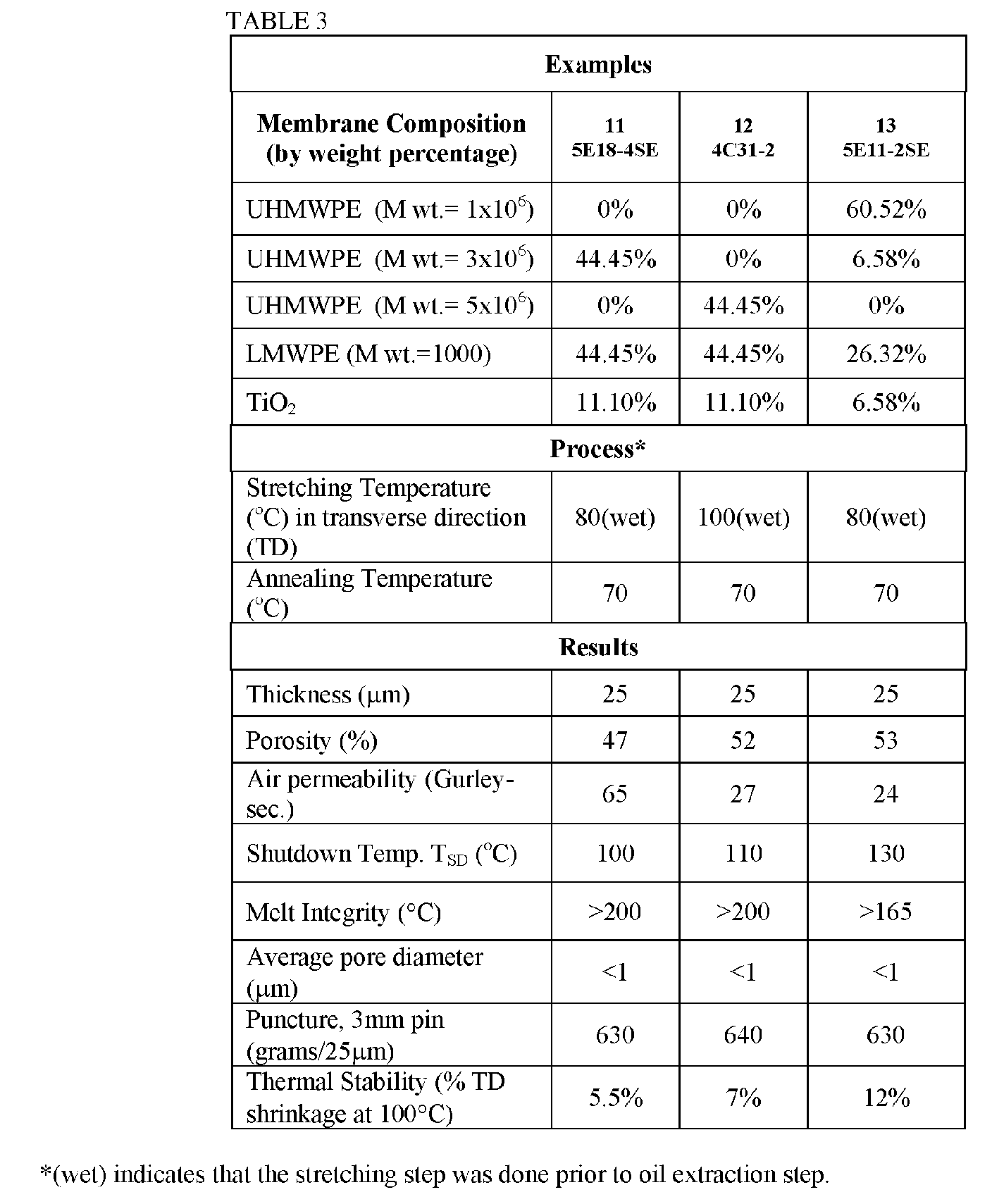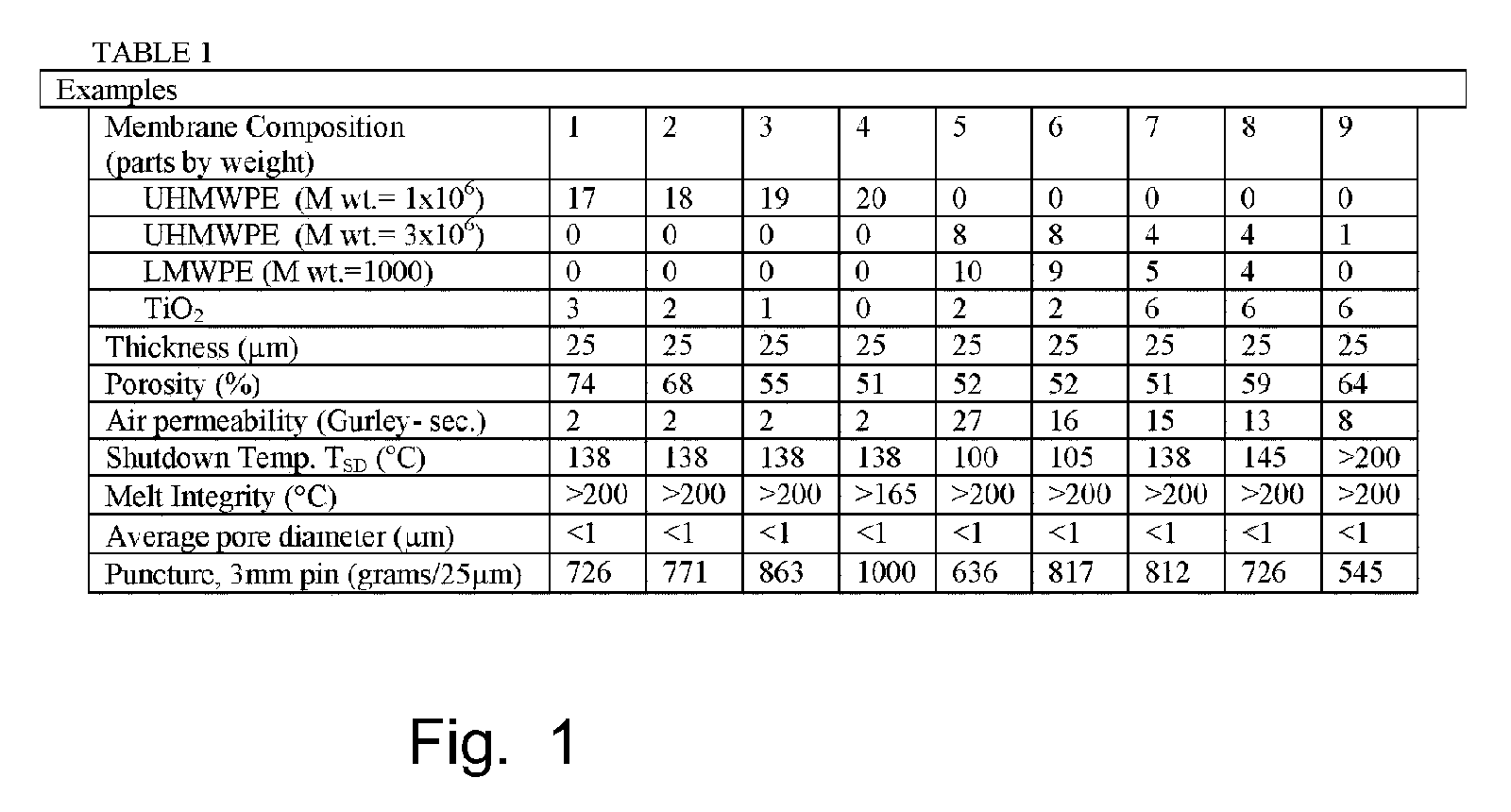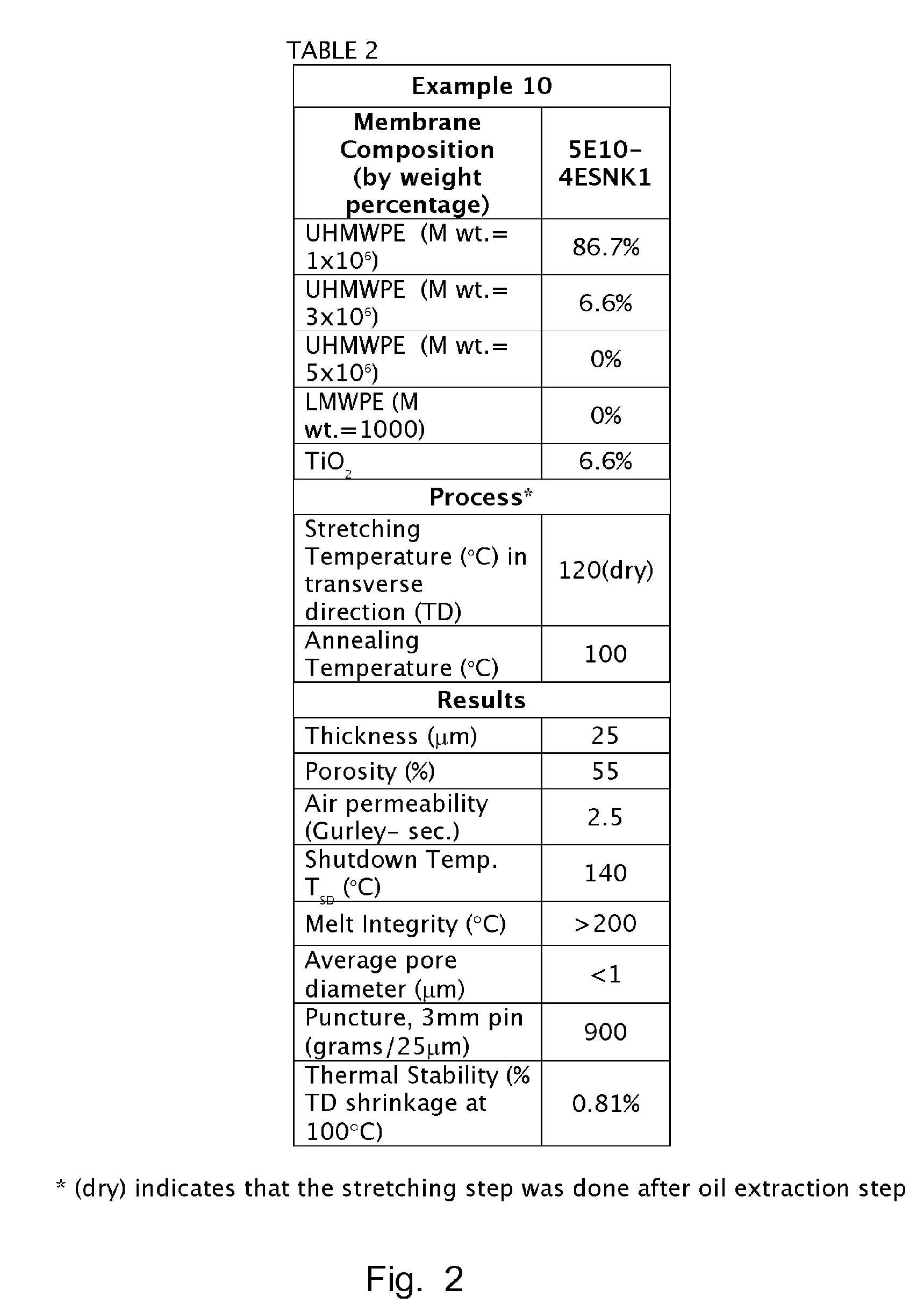Shutdown separators with improved properties
a technology of improved properties and separators, which is applied in the direction of coupling device connections, cell components, and membranes, can solve the problems of lithium ion battery thermal runaway characteristics, major obstacles to the use of lithium ion batteries, and safety concerns, and achieve the effects of improving air permeability, low impedance, and flexibility
- Summary
- Abstract
- Description
- Claims
- Application Information
AI Technical Summary
Benefits of technology
Problems solved by technology
Method used
Image
Examples
example 1
[0103]A dry-blend consisting of 17 parts by weight of a UHMW polyethylene having Mw of 1×106, 3 parts by weight of TiO2 with an average particle size of less than 0.2 microns was prepared. To 100 parts by weight of the dry blend thus prepared were added 0.1 part by weight of an antioxidant. The 25 parts by weight of the resultant mixture were fed into a twin screw extruder. The dry blend mixture was melt-kneaded in the extruder while feeding 75 parts by weight of a liquid paraffin from one or two feed throats making a solution.
[0104]The above solution was extruded from a coat hanger die into the form of a sheet approximately 5 mil thick. Using a three-roll calender, the gel sheet was subsequently hot pressed and cooled down producing a 2 to 3 mil thick gel sheet. The liquid paraffin in the gel sheet was extracted by hexane and dried. The dried microporous sheet was subsequently stretched in transverse direction at 125° C. for 200% and also heat set at 125° C., producing a microporou...
example 2
[0105]Except for using a dry blend mixture of 18 parts by weight of a UHMW polyethylene, and the addition of 2 parts by weight of TiO2, the same procedures of Example 1 were repeated to obtain a microporous membrane.
example 3
[0106]Except for using a dry blend mixture of 19 parts by weight of a UHMW polyethylene, and the addition of 1 part by weight of TiO2, the same procedures of Example 1 were repeated to obtain a microporous membrane.
PUM
| Property | Measurement | Unit |
|---|---|---|
| particle size | aaaaa | aaaaa |
| shutdown temperature | aaaaa | aaaaa |
| shrinkage | aaaaa | aaaaa |
Abstract
Description
Claims
Application Information
 Login to View More
Login to View More - R&D
- Intellectual Property
- Life Sciences
- Materials
- Tech Scout
- Unparalleled Data Quality
- Higher Quality Content
- 60% Fewer Hallucinations
Browse by: Latest US Patents, China's latest patents, Technical Efficacy Thesaurus, Application Domain, Technology Topic, Popular Technical Reports.
© 2025 PatSnap. All rights reserved.Legal|Privacy policy|Modern Slavery Act Transparency Statement|Sitemap|About US| Contact US: help@patsnap.com



